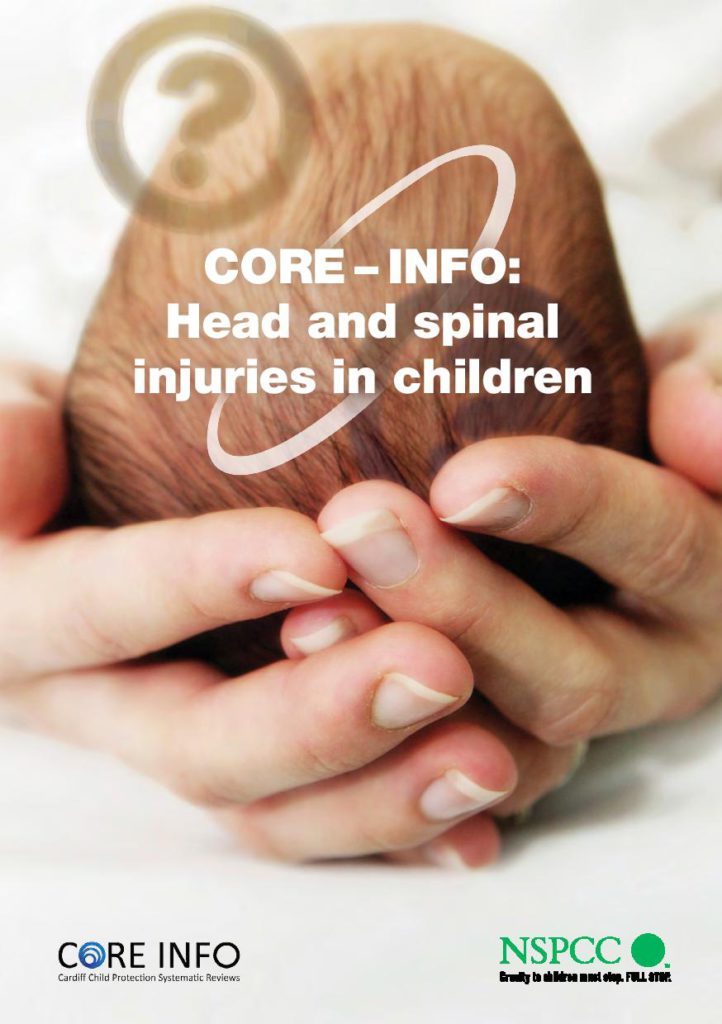Abusive Head Trauma
Abusive head trauma, also known as ‘Shaken Baby Syndrome’, is a severe form of physical child abuse and may result from shaking an infant by their shoulders, arms, or legs; or from impact (with or without shaking) caused by throwing or hitting a child. The resulting whiplash effect can cause fractures or result in bleeding in the infant’s brain and behind the eyes, which can lead to death or significant long term health and learning disabilities.
Playful interaction with an infant, such as bouncing a baby on the lap or tossing the baby up in the air, won’t cause the injuries associated with abusive head trauma. Instead, these injuries often happen when someone shakes the baby out of frustration or anger.
Nearly all victims of abusive head trauma suffer serious health consequences and at least one of every four babies who are violently shaken dies – babies (newborn to 4 months) are at greatest risk of injury from shaking. Inconsolable crying is a primary trigger for shaking a baby.
You should never shake a baby under any circumstances. Shaking a baby is a serious and deliberate form of abuse.
During this time, stress levels at home may be increased – please see iconcope.org for guidance on coping with crying.
Remember – Crying is normal and it will stop soon, you can cope.
Call 999 right away if you believe that your baby or another baby is a victim of abusive head trauma. This is a life-threatening condition that requires immediate medical treatment.
Who shakes and why?
Research suggests 1 in 9 mothers may have shaken their baby and up to 2 in 9 felt like doing so.
The parents or the mothers partner are responsible for Abusive Head Trauma in 75% of babies.
70% of perpetrators are males – fathers/ male carers.
The most at risk groups are:
- Male baby;
- Below 6 months;
- Low birth weight;
- Regular contact with health professionals.
It affects approximately 24 of every 100,000 babies admitted to hospital each year.
Abusive Head Trauma can occur in every socio-economic group.
Triggers
Child Safeguarding Practice Reviews show that crying is the main trigger for babies being shaken.
Most babies start to cry more frequently at about two weeks of age, with crying becoming more frequent and longer lasting during the next few weeks and reaching a peak at six to eight weeks. After approximately eight weeks babies start to cry less and less each week.
It is completely natural for babies to cry and it is important to remember that this will stop. Coping with a crying baby can be very stressful for parents.
Guidance
Cambridgeshire Community Services and the Safeguarding Partnership Boards in Luton, Bedfordshire, Cambridgeshire and P’Boro have launched the ICON programme across the system. The ICON programme offers a systematic Public Health approach to supporting professionals to deliver key messages and interventions for parents to cope with a crying baby.
The programme – ICON: Babies Cry, You Can Cope – provides messages at key touchpoints and resources to let parents and all carers know that babies cry to communicate and that there are ways of coping with this crying. Resources include leaflets and video clips which can be shared with parents and all carers at any contact with midwives, health visitors, GPs, social workers, and other professionals who come into contact with families.
The ICON programme recommends all parents and all carers to try soothing their crying baby with comforting methods and suggests sensitive parenting coping methods. Guidance supports parents and carers to put their baby down in a safe environment for a few minutes as a last resort when they are feeling frustrated and stressed
Speak to someone if you need support such as your family, friends, Midwife, GP or Health Visitor.
ICON represents:
I – Infant crying is normal
C –Comforting methods can help
O – It’s OK to walk away
N – Never, ever shake a baby
Starting points
- Are they hungry?
- Are they wet or dirty?
- Are they tired?
- Are they too hot or too cold?
- Are they in pain?
- Do they want to be held?
- Is there too much going on around them?
If your baby is crying constantly
There are several reasons that can cause a baby to cry excessively such as colic or illness, particularly if it does not sound like their normal cry. Click the links for more detailed advice.
Thinking ahead
It can be helpful to think ahead and focus on what you can do to help yourself when your baby is crying. Writing down a small plan, make a note in your phone, or even bookmark/favourite this webpage; these things can all help. You might want to ask yourself:
- Who can I go to for help with crying?
- What will I do if I need a few minutes to myself?
- What makes me feel better?
- What makes me feel calmer?
There are lots of things you can do to help comfort your baby. Please remember you can try all of these and they may still cry – that’s ok.
Coping can be a challenge. Just remember to stay calm, this phase will pass.
It’s never too early to speak out and ask for help and there is lots of support available, whether it is from friends, family or professionals.
For further information please visit the ICON website

